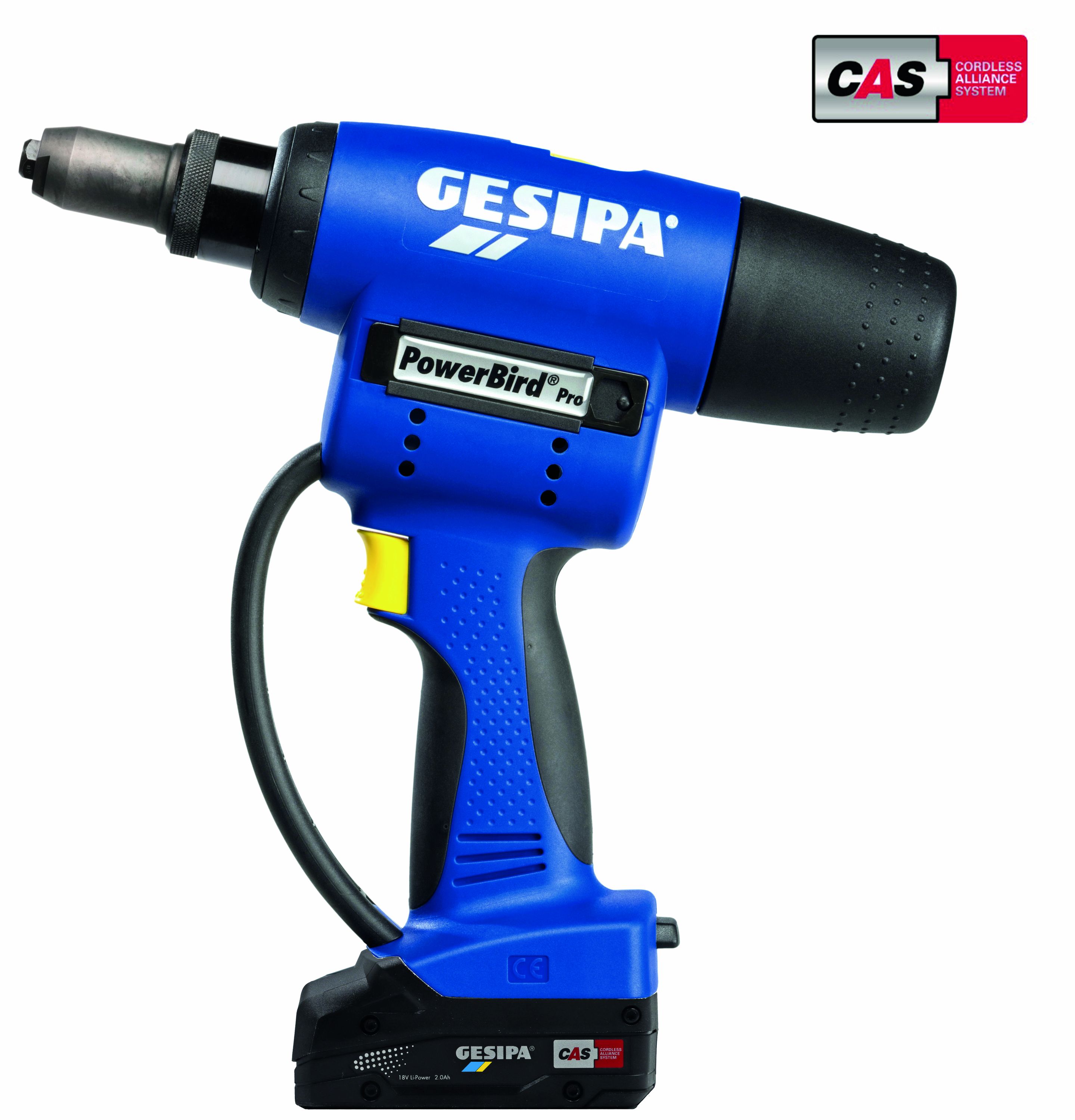PowerBird Pro Gold Edition – the strong one for high volumes and fast working sequences Advantages Even more powerful: Thanks to the brushless motor and the 20,000 N setting force the PowerBird Pro Gold Edition is even more powerful and can even set G-Bulb and PolyGrip blind rivets up to Ø 6.4 mm in any material. The optional Autoreverse function additionally shortens the pulling process, mm for the purpose of setting particularly long rivets. Even faster, virtually no wear: The motor of the PowerBird Pro Gold Edition has an extremely long service life, is virtually non-wearing and and reliably guarantees the fastest setting frequencies. Well-proven and ergonomically designed: Features the same ergonomic design as the TAURUS series, already proven a thousand times over. Technical data Setting force: 20,000 N Weight: 2.1 kg with battery (2.0 Ah) Drive: 18 V brushless DC motor (BLDC) Stroke: 25 mm Scope of delivery Nosepieces: 17/32, 17/36, 17/40 and 17/45 Additional jaw pusher for smaller blind-rivet dimensions Working range Blind rivets up to Ø 6.4 mm all materials (max. mandrel Ø 4.3 mm) SPRING-LOADED TRIGGER SYSTEM The well-proven spring-loaded trigger system of the TAURUS® series now also for the Bird Pro series The spring-loaded trigger system ensures that the parts to be riveted reliably make contact without any gaps before riveting. Furthermore, the operator will be certain that the blind rivet has reached its end position in the hole before setting and the setting head is in contact with the material. The pressing force can be varied with springs depending on the application. FUNCTIONAL PRINCIPLE The surface contact trigger mechanism is also installed on the trigger button of the device. It only allows the riveting device to trigger when a set compressive force on the part is reached. This ensures that the various components in the application are pressed correctly onto each other before the riveting process. This means that uncontrolled deforma- tion of the rivet body between the materials is prevented, which would otherwise go andetected. The surface contact force can be varied in five steps. It is set by either adding or removing springs. This rules out the possibility of unintentionally changing the defined surface contact force. A row of pushbuttons is arranged in front of the standard trigger button. On overcoming the spring force and reaching the defined surface contact force, the riveting process can only be triggered by pressing the yellow button.

